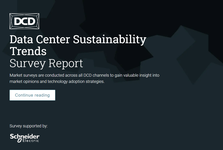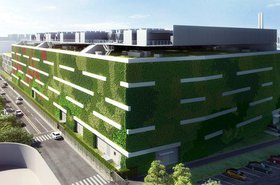Enterprise decision-makers have a big task on their hands. Rising expectations from consumers and employees mean there is more pressure than ever to be environmentally responsible. But this must be balanced with the growing need to use the best technology and the two aren’t always complimentary to each other. Increased IT usage comes with more digital waste, greater energy consumption and demands for larger technology inventories.
How exactly can organizations improve the sustainability of data centers and cater to the pressure from stakeholders?
A smooth supply chain
The supply chain has taken a hit over the last few years with Brexit (in the UK), Covid and increased fuel costs all impacting efficiency But supply chains must be robust in order to replenish inventories and maintain business continuity. While there are many external influences on the supply chain, making the process more sustainable can also cut costs, strengthen business and mitigate environmental risks. For example, by using trains in place of planes and reducing the distance that products travel, companies can cut the number of steps and dependencies required to get products from factory to customer and lower the fuel consumption and costs required as a result.
A circular economy
Creating a circular economy has become increasingly important to IT management because it reduces the use of materials and energy in manufacturing products and then recovers as much of the end products as possible through re-use and recycling. Many thousands of pieces of hardware are used in a data center and a large number are deemed to be end of life each year. By setting a higher standard when it comes to recycling, reusing or repairing 100 percent of equipment, there will be a significant reduction in the amount of environmentally damaging waste that ends up in landfill.
A ‘Design-Use-Return’ model can cover everything from products and packaging, manufacturing and operations and product take-back and value recovery.
An Asset Recovery Services (ARS) can ensure responsible asset recovery and data disposal. maximizing the reuse potential of IT assets such as data centers. In the first instance the technology is reused where possible. Any equipment that cannot be repaired or resold in secondary markets is considered for parts and components. Then when new products are manufactured, the raw materials from previous equipment are used, bringing the economy to a full circle, and benefitting both the environment and IT industry.
Set aggressive targets
Targets are essential when it comes to measuring success and holding accountability. The only way to achieve success is through setting a high bar and making an open commitment to stakeholders – one that is constantly monitored.
The range of metrics that can be tracked, such as water usage, electric consumption and use of renewable energy, offer wide avenues for energy savings. Understanding how you’re measuring environmental efforts and what metrics you need to see moving in the right direction will help to show whether you are really making progress. So that measurement isn’t done in vain, it’s first important to set realistic goals.
Setting the standard alone can be difficult, especially considering that most businesses aren’t sustainability experts. While it’s important to have targets specific to a business, committing to industry-recognized sustainability initiatives can also provide significant benefits. They can help to raise the bar for all organizations and encourage those that commit to review and adapt their operations in line with their obligations. For example, the Science Based Targets initiative (SBTi) is the first ever science-based Net-Zero Standard for emissions reduction. Its mission is to combat the current inconsistencies that surround net-zero targets and enable consistent measurement and evaluation of a company’s emissions reduction.
Limit the impact data has on resources
The focus on sustainability for IT teams will not go away and as data grows. Around 1 percent of global electricity is used to power data centers and as we progress towards a world where data is projected to grow to 463 exabytes created every day by 2025, electricity consumption will multiply rapidly. The same goes for water usage. According to a US Government report, a data center will need on average around 1.8litres of water for every kWh consumed, predominantly for air conditioning purposes.
Organizations, therefore, need to look at how best to reduce energy consumption. This includes considering how to manage the infrastructure that underpins operations. The first step needs to be moving from a wasteful legacy IT model towards infrastructure that is built from the ground up with energy efficiency in mind. A prime example is capitalising on liquid cooling technology as in some cases, it can reduce energy consumption by up to 40 percent, whilst ensuring there is little to no impact on performance.
The data center of the future
There is a need for all businesses to be sustainable, and this is not going away. All industries are feeling the pressure, and this is set to increase as more regulation comes into play and there is further demand from the consumers and employees. Being green is an essential business practice that needs to be adopted by all – and the data center is no exception.





